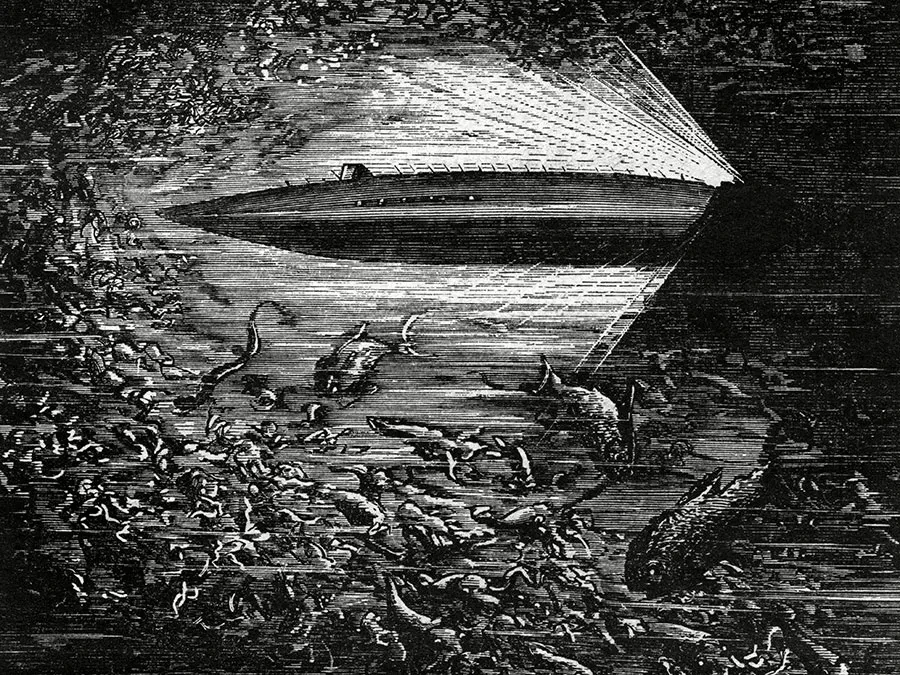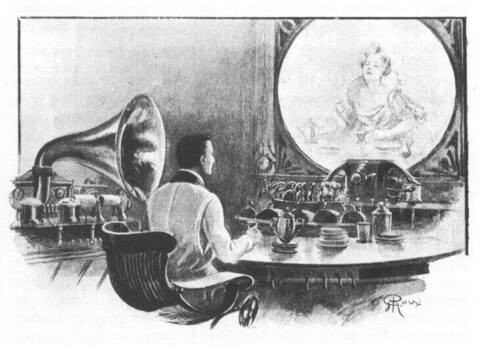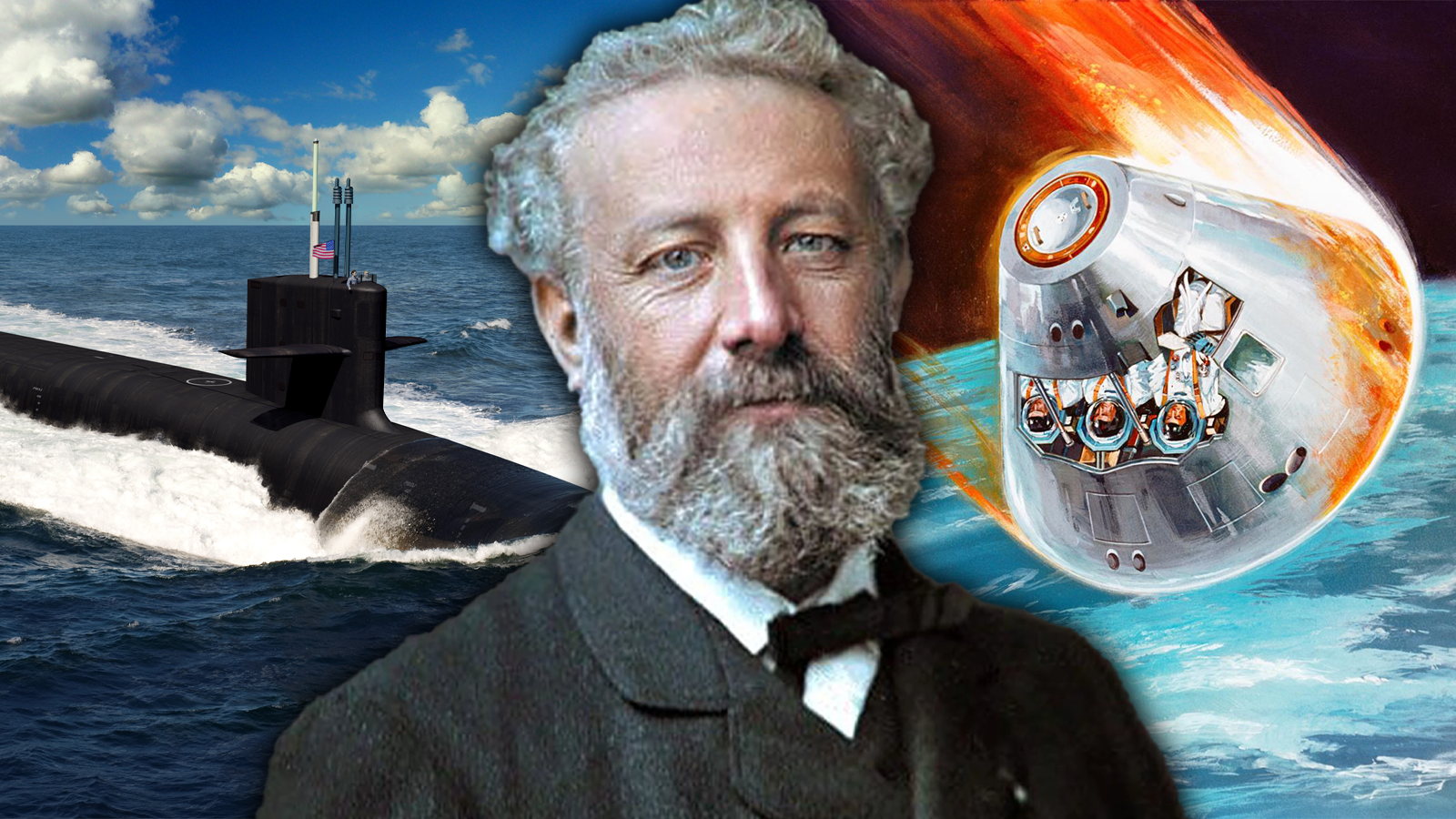Since the dawn of modern science and technology, authors have been embracing their inner futurist and writing about what they believed the future would bring us. Sometimes, that led to wacky and fantastical concepts like hoverboards, but other times, sci-fi predicting the future led to something that came remarkably close to what actually happened. Perhaps the most famous and most eerily correct comes from science fiction writer Jules Verne.
Jules Verne Predicted Nuclear Submarines

In Jules Verne’s critically acclaimed 20,000 Leagues Under the Sea, Verne envisioned a world in which submarines would be all-electric and capable of traveling great distances while underwater without the need to resurface. While he couldn’t have known that nuclear fission is how it would be done, he was remarkably close in his predictions as we now have fully electric submarines that can last months without needing to surface, fully fulfilling the central prediction in his novel. While this might just be due to him following the logical trend of submarines being able to submerge for longer and longer, it was still a remarkable guess considering practical electricity as we know it only existed for a few decades at that point.
Jules Verne Accidentally Invented Fiber Optic Cabling

Jules Verne, ever the futurist, has an absolutely massive amount of things he correctly predicted. One of which comes from his book In the Year 2889, where he describes the “photo telephone”, a device that enabled “the transmission of images by means of sensitive mirrors connected by wires.” While that sounds spot on to what video calls could become, that isn’t the technically impressive part. People have been predicting long-distance video communication for a very long time. The impressive part of this is the bit about sensitive mirrors connected by wires, which is a perfect description of what today’s real fiber optic cabling does to allow us to have high-speed internet. While the ability to manufacture something so precisely was impossible in Verne’s day, he was still able to figure out the concept that would later be used for fiber optic cabling, although he thought of literal image transmission and not light being encrypted and decrypted, as fiber optic does.
Jules Verne Predicted News Broadcasts

In the Year 2889 is a book from which many of his claims as an accurate futurist lay, but perhaps none so more than his accurately predicting modern television news broadcasts. In an era where daily newspapers were the norm, Verne envisioned a future where everyone would get their news spoken to them in the morning from “reporters, statesmen, and scientists”, forecasting radio and television news broadcasts years before the first ones would start. While this short story was later believed to have been written by his son, Michel, it was said the story is based on the ideas and predictions his father told to him.
Verne Accurately Predicted Space Travel

In the 1860s, a century before space travel was feasible and during a time when people believed spacecrafts would be able to simply take off from the earth, Verne saw the methods of space travel as having to have enough force to break through the atmosphere, much like “a big gun going off and you get enough force to break through gravity”. While he was wrong in that the ship itself would carry the thrusters and they wouldn’t be built into a machine on the ground, he thought of a method that would carry over to today. While this was simply building off the ideas of the laws of gravity, it showed remarkable forward-thinking from a man in the 1800s. It goes to show that futurism can come not from luck, but by being so far ahead in your ideas rooted in basic science that only future generations who had the means to execute these ideas can appreciate the scientific grounding of these plans.
Verne Not Only Predicted How to Leave the Atmosphere But Also Re-enter
As with his predictions on space travel, this comes from his adventure book From The Earth to the Moon, where Verne demonstrated that he not only had a great enough understanding of science to come up with a way to exit the atmosphere, but he exactly predicted how we would get back to earth. Verne thought that, to get back from space, we would simply drop a capsule from space and land in the ocean before floating to the surface, where the passengers could be received. While modern aerospace companies and agencies have tried using space shuttles for reentry before, the tried and true method that we still use to this day is to land the payload in the ocean in the exact same way Verne predicted one hundred years before we did it.
Jules Verne truly was a visionary who predicted much of modern science of technology, which is made all the more impressive when we think about how he could do that by working solely on the basic principles of science. Verne showed that predicting the future is not an exercise in dreaming up your wildest inventions but rather in seeing how technology is progressing and basing your prediction on the logical extreme that the laws of physics can handle. While we may not ever get true flying cars like the Sci-Fi books of the past because they go beyond the laws of physics, we can rest in knowing that anyone predicting humanity will reach the bounds of physics will eventually be proven right as we achieve those goals.
Follow us for more entertainment coverage on Facebook, Twitter, Instagram, and YouTube.



